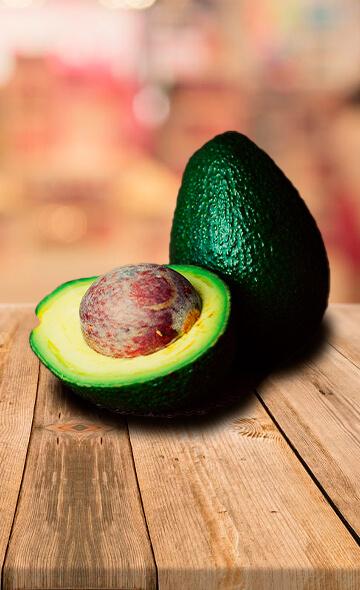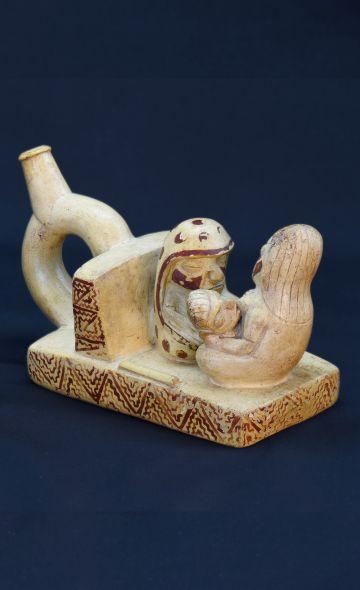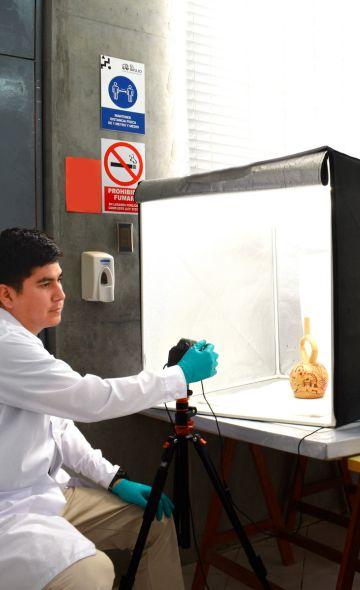- Visitors
- Researchers
- Students
- Community
- Information for the tourist
- Hours and fees
- How to get?
- Visitor Regulations
- Virtual tours
- Classic route
- Mystical route
- Specialized route
- Site museum
- Know the town
- Cultural Spaces
- Cao Museum
- Huaca Cao Viejo
- Huaca Prieta
- Huaca Cortada
- Ceremonial Well
- Walls
- Play at home
- Puzzle
- Trivia
- Memorize
- Crosswords
- Alphabet soup
- Crafts
- Pac-Man Moche
- Workshops and Inventory
- Micro-workshops
- Collections inventory
- News
- Researchers
- Series on Andean Food: Avocado
News
CategoriesSelect the category you want to see:

Magdalena de Cao to Once Again Host an International Mural Art Gathering ...

Explore El Brujo Through Virtual Tours: Culture and History at a Click ...
To receive new news.
By: Jose Ismael Alva Ch. y Leslie Zuñiga Becerra
By Jose Ismael Alva Ch. And Leslie Zuñiga Becerra
"It is a very healthy and gifted fruit [1], usually eaten with salt or sugar, and this way it has an excellent flavor", Vázquez de Espinosa, 1630
The Avocado in History
When the Spanish arrived on our continent they discovered the avocado (Persea americana). In the XVI and XVII centuries, chroniclers Pedro Cieza de León [1], Antonio Vázquez de Espinoza [2] and Bernabé Cobo [3] described the avocado as a fruit in the shape of a large pear, with a thin skin and the largest seed ever seen until then. The "meat" or edible part "is green, somewhat whitish, tender, buttery and very soft" [3].
The Spanish identified three main varieties of avocado that were distributed in the provinces of Mexico, Guatemala and the West Indies [4]. However, for the Jesuit Bernabé Cobo, the best avocados came from the valleys of the hot and dry land of Peru. Specifically, the best and most appreciated fruits came from the avocado trees cultivated in the valleys of Ica, Azángaro and Huamanga [3].
The antiquity of the avocado
The Huaca Prieta, a site located at the southern end of the El Brujo Archaeological Complex, has one of the oldest evidences of avocado in South America. In the heights of the Cauca valley in Colombia, the evidences of this fruit date from 10 500 years ago, while the radiocarbon dating obtained from an avocado seed in Huaca Prieta shows that its consumption occurred between 10 486 and 10 158 years before the present era [5] [6]. These data are extremely relevant, as it has been commonly considered that the Tehuacán Valley, in Mesoamerica, was the only center of domestication of avocado in the same epoch [4] [7].
Avocado Production in Contemporary Peru
Currently, the main regions of Peru dedicated to the production of avocado are La Libertad, Lima, Ica and Junín. By 2017, Peru became the second producer of avocado worldwide, registering an export of 247 thousand tons of this fruit to Europe and Asia [8].
An exciting flavor
The avocado has a creamy texture. It is moist, with a smooth and pleasant taste on the palate, which has made it very versatile and popular in cuisine. In recent years it has become indispensable in the preparation of some main dishes and it is part of our breakfasts: the classic bread with avocado, which is usually accompanied with drinks such as quinoa, maca, emollient, etc.
It is one of the most pleasant fruits in the world and is preferably used in salads as a food complement. Sometimes it is stuffed with a "stuffed avocado" dressing [9]. It is often used for healthy pastries in recipes such as avocado-based fudge, avocado and banana brownies, avocado cheesecake, chocolate and avocado cookies, avocado mousse, among other desserts.
But, due to its high caloric content, it is appropriate to control the proportions to be ingested, according to the rest of the ingredients on the menu and according to physical activity. Half an avocado a day could be the recommended ration to avoid increasing calories [10].
No kidding, take it home and make it into a salad!
Among the medicinal properties attributed to avocado, it is mentioned that chewing its fresh leaves can heal mouth conditions (inflammations, suppurations and cavities), fortify the gums and strengthen the teeth. For its part, the fruit or fleshy part is purifying and gently laxative. It stimulates the appetite, reduces inflammation on the nerves, body and muscles, and helps growth. From the fruit, seeds and leaves a chemical compound called Perseitol was isolated, which can be used in traditional medicine for its de-inflammatory and diuretic properties, aside from facilitating the expulsion of retained bile in the gallbladder, favoring the expulsion of gases from the digestive tract and stimulating blood flow in the pelvic area and in the uterus. In some cases, it stimulates menstruation [11].
Its skin concentrates biologically active compounds such as polyphenols, which act as powerful antioxidants and urease inhibitors –one of the most important colonization factors of Helicobacter pylori– preventing or limiting the pathological consequences associated with the presence of bacteria, such as gastritis, peptic ulcer, MALT lymphoma and even the development of gastric cancer [12].
Nutritional values of avocado
References
[1] Cieza de León, P. 1922 [1553]. The Chronicle of Peru. First part. Madrid: Calpe.
[2] Vázquez de Espinosa. 1948 [1630]. Compendium and Description of the West Indies. Washington: Smithsonian Institution.
[3] Cobo, B. 1964 [1653]. History of the New World. First part. Library of Spanish Authors Volume XCI. Madrid: Atlas editions.
[4] León, J. 2000. Botany of Tropical Crops. San José: Inter-American Institute for Cooperation on Agriculture.
[5] Bonavia, D., V. Vásquez, T. Rosales, T, Dillehay, P. Netherly, P. and K. Benson. 2017. Plant Remains. Where the Land Meets the Sea. Fourteen Millennia of Human History at Huaca Prieta, Peru. T. Dillehay (Ed.), Pp. 367-433. Austin: University of Texas.
[6] Dillehay, T. and D. Bonavia. 2017. Cultural Phases and Radiocarbon Chronology. Where the Land Meets the Sea. Fourteen Millennia of Human History at Huaca Prieta, Peru. T. Dillehay (Ed.), Pp. 88-108. Austin: University of Texas.
[7] Landon, A. 2009. Domestication and Significance of Persea americana, the Avocado, in Mesoamerica. Nebraska Anthropologist, 47, pp. 62-79.
[8] Management. 2018. Peru is consolidated as the second world supplier of avocado. https://gestion.pe/economia/peru-consolida-segundo-proveedor-mundial-paltas-228551-noticia/
[9] Fernández, A and E. Rodríguez. 2007. Ethnobotany of Pre-Hispanic Peru. Trujillo: Herbarium Truxillense.
[10] Moneo, L. (August 22, 2018). Avocado, the heart-healthy fruit. Webconsultas: Revista de salud y bienestar. https://www.webconsultas.com/dieta-y-nutricion/alimentos-saludables/usos-del-aguacate-en-la-cocina-recetas-y-consejos-de-consumo
[11] Cabrera Reyes de Ruiz, R., Paucar Loli, ER, Romero Medina, LM, Chavez, S., Solanch, Y., Contreras Cruzado, DS & Alvarez Gonzales, FDL Performance and Physical-Chemical characterization of Perseitol obtained from exudate from the bark of Persea Americana Mill (Avocado).
[12] Chávez, F., Aranda, M., García, A., & Pastene, E. (2011). Antioxidant polyphenols extracted from the epicarp of Avocado (Persea americana var. Hass) inhibit Helicobacter pylori urease. Latin American and Caribbean Bulletin of Medicinal and Aromatic Plants, 10 (3), 265-280.
[13] Reyes García, M., Gómez-Sánchez Prieto, I., & Espinoza Barrientos, C. (2017). Peruvian food composition tables.
Researchers , outstanding news





